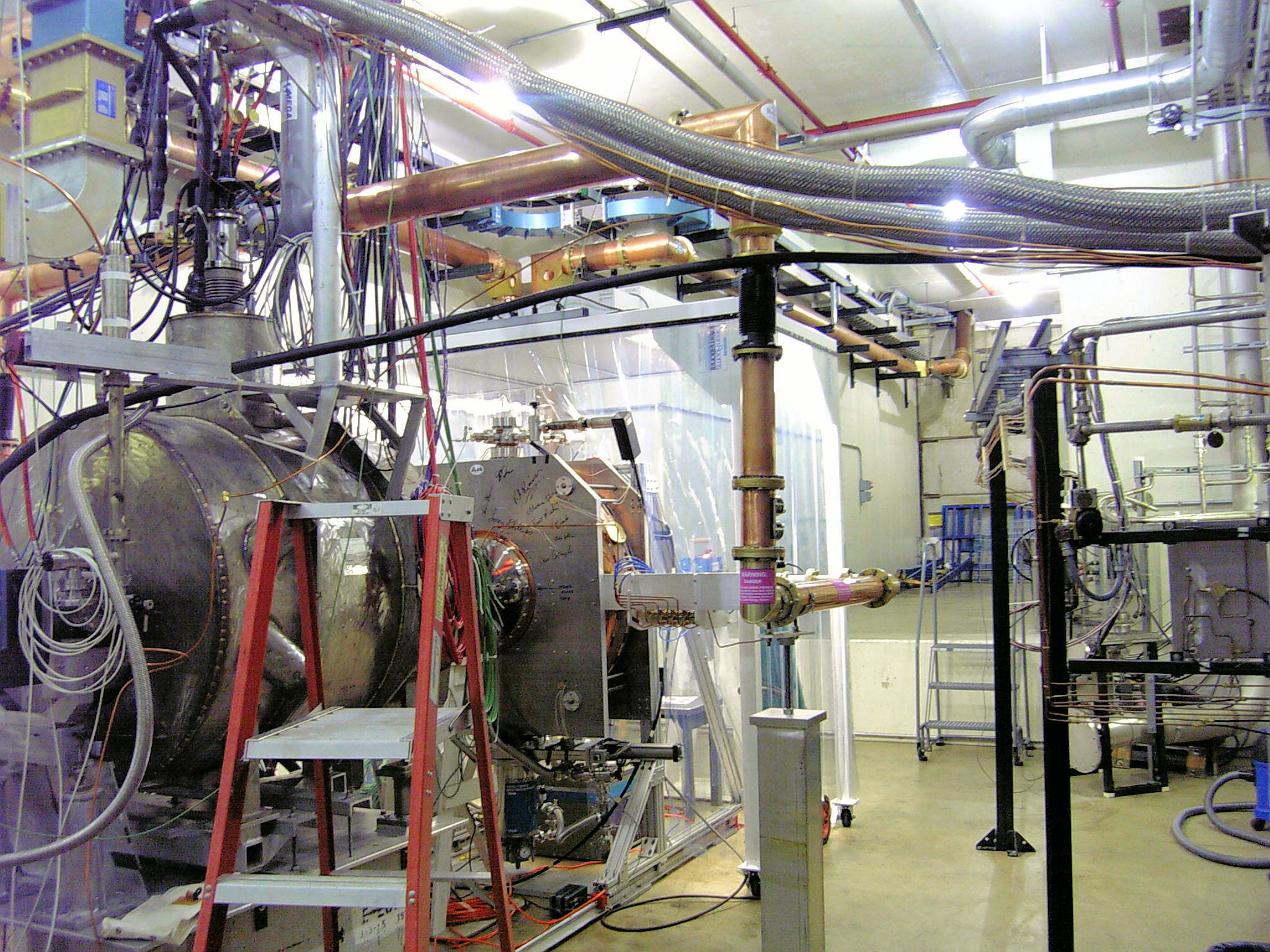Intense Muon Beam R&D
Recent Progress
During FY2008 we are utilizing LBNL scientific and engineering staff experienced in accelerator physics and design to continue working with their counterparts in the U.S. Neutrino Factory and Muon Collider Collaboration (NFMCC) and in the Muon Ionization Cooling Experiment (MICE). Most of the LBNL work involves design and fabrication of hardware components. Meetings and topical workshops are sometimes held to stimulate the work and provide a forum for discussion. In particular, the annual NuFact international workshop is a key forum for disseminating results and coordinating the international Neutrino Factory R&D effort.
The Neutrino Factory will require several different RF systems to capture, cool, and accelerate the beam. With a multitude of RF structure and systems designs, critical work is required at an early R&D stage to assess the viability of different options. For the experimental R&D program, RF structures and systems are being designed and developed at frequencies of 201 MHz and 805 MHz for the muon cooling study. To obtain the high gradients required in these applications, novel and technically challenging designs are needed. We previously designed a pillbox type cavity with beryllium foils, through which the muon beam would pass, that maximizes the accelerating field on axis.
The engineering challenges of this novel approach will continue to be addressed this year by testing, under our supervision, our existing cavity operating at 805 MHz. Our test program is now located at the MuCool Test Area (MTA) at Fermilab. Handling high power in the input coupler, and the cooling channel cavities themselves, is critical, and multipactor and surface preparation are being studied to avoid problems. Thus far, we have carried out tests using either copper or beryllium windows, both with and without a magnetic field. In the absence of a magnetic field, the results were very encouraging. The 805-MHz cavity commissioned easily to a gradient of 40 MV/m, exceeding its 30 MV/m design goal. With a magnetic field, however, the dark currents were much higher and the gradient was limited to lower values to avoid damage to cavity surfaces. The beryllium windows (coated with TiN) perform better than the copper windows, giving rise to lower dark current. Furthermore, we saw no spark damage to the beryllium windows, though they ended up coated with sputtered copper from elsewhere in the cavity. To avoid cavity frequency changes due to window motion, we (in collaboration with colleagues from University of Oxford) redesigned the Be foils to give them a pre-curved shape. These are now being used successfully in the MTA.
The LBNL-designed 5-T solenoid (see Fig. 3) will continue to be used this year at FNAL to test the 805-MHz cavity referred to above. This magnet has a unique design, with two independently powered coils that can be operated with the same polarity ("solenoid mode") or opposite polarity ("gradient mode"). The solenoid was originally installed and commissioned in Lab G at FNAL five years ago and two years ago was relocated to the MTA.
Fig. 3.: 201-MHz test cavity installed in the MTA at Fermilab. The LBNL-designed 5-T solenoid in the foreground is used for testing the smaller 805-MHz cavity. Until the prototype coupling coil is available, we are testing the 201-MHz cavity in the fringe field of the 5-T solenoid.
We have completed the fabrication of a 201-MHz prototype cavity suitable for the cooling channel specifications of a Neutrino Factory (Fig. 3), and we have developed a four-cavity assembly design (see Fig. 2) having Be foil windows of 21 cm radius. Fabrication of the RF cavities for the RFCC module got under way this year. LBNL will manage this activity, subcontracting to various industries as appropriate. Under our supervision, the prototype 201-MHz cavity for MuCool has undergone testing with high power at the Fermilab MTA. The cavity easily reached full gradient (up to 19 MV/m) in the absence of magnetic field. As an interim measure, we have modified the cavity vacuum system to permit cavity testing in the fringe field of the LBNL-supplied 5-T solenoid.
To accommodate the larger size required for a 201-MHz cavity, we have now designed a new large-bore coupling coil solenoid. This magnet, along with its MICE counterparts, is being fabricated in collaboration with ICST in Harbin, China. Preparatory work and purchasing of raw materials are already under way. We anticipate that the MuCool coupling coil will be fabricated in 2010, and the two required MICE coils will follow shortly thereafter. The MuCool coupling coil magnet will be sent to Fermilab to be used to complete testing of the 201-MHz cavity.


